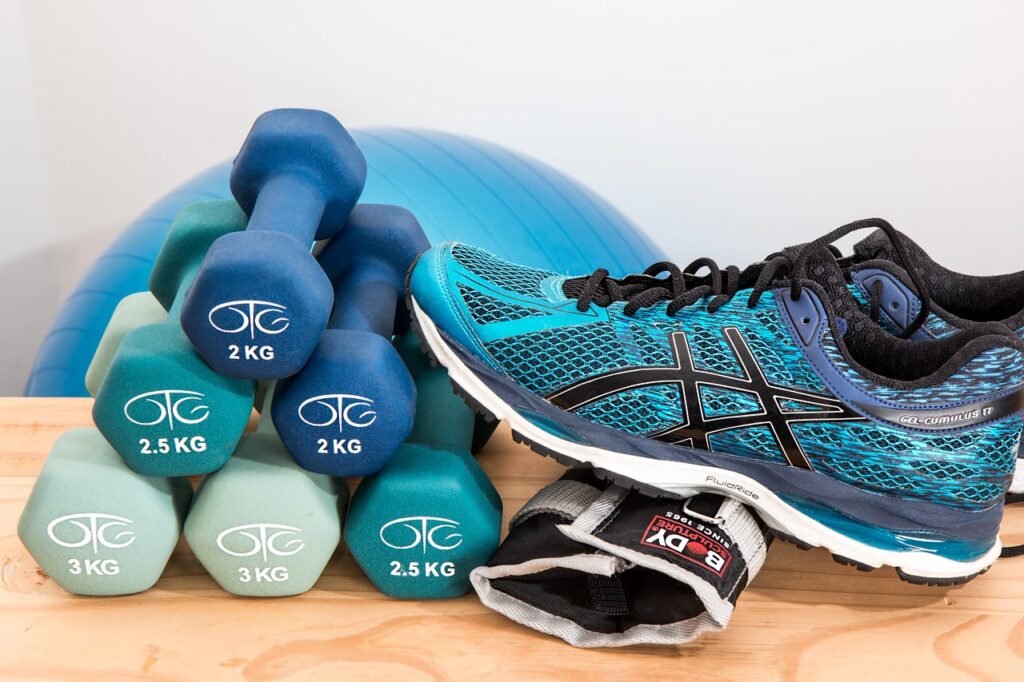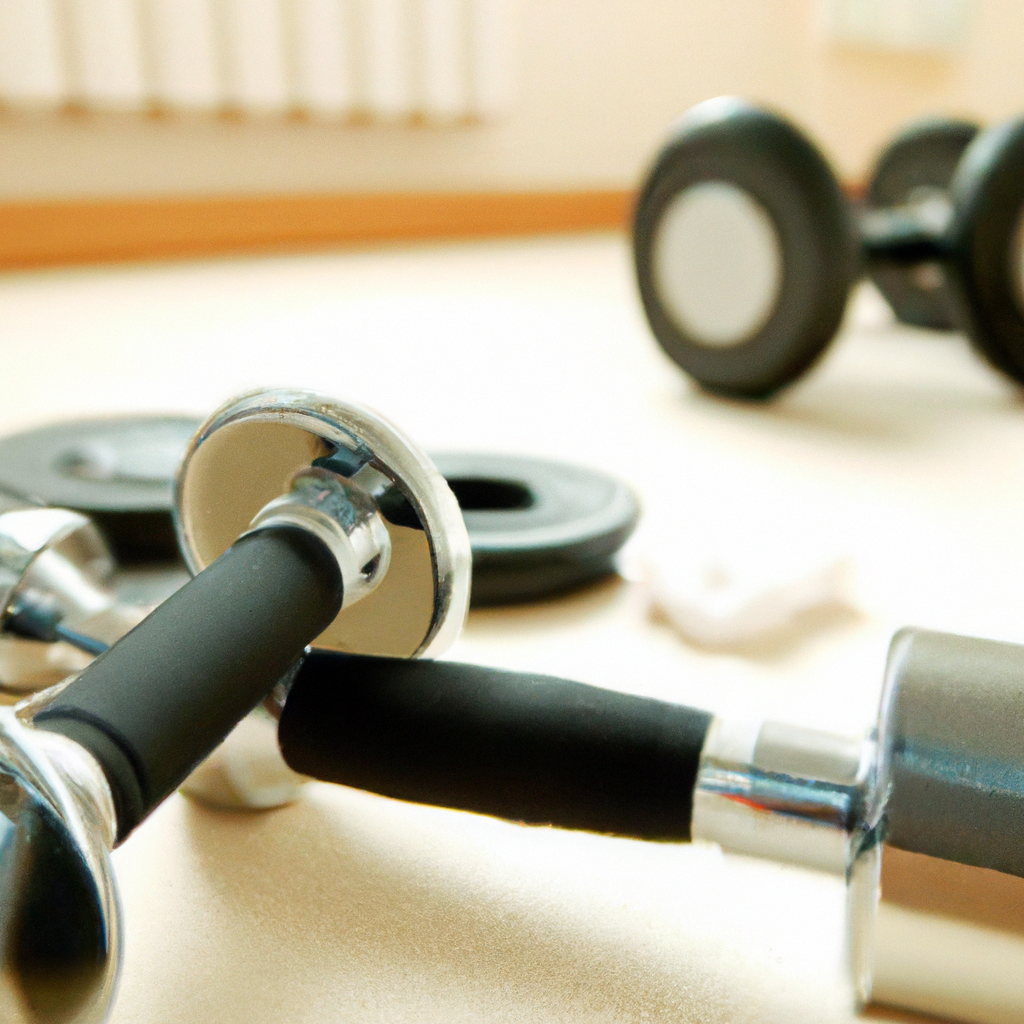Are you looking for an effective and convenient way to maximize your muscle gain without the need for equipment or a gym membership? Look no further than bodyweight exercises! In this article, we will explore the incredible benefits of incorporating bodyweight exercises into your fitness routine, focusing specifically on their ability to promote muscle growth and aid in fat loss. Discover how you can achieve your fitness goals using your own body as resistance, and unlock the key to a leaner, stronger physique. Get ready to revolutionize your workouts and transform your body with the power of bodyweight exercises.
Choosing the Right Bodyweight Exercises
When it comes to bodyweight exercises, it’s important to choose the right exercises that target different muscle groups effectively. Tailoring your workout to focus on specific areas can help you maximize muscle gain. For example, if you want to target your upper body, exercises like push-ups, pull-ups, and dips can be highly effective. On the other hand, if you’re looking to build strength in your lower body, exercises like squats, lunges, and glute bridges are excellent choices.
Targeting Different Muscle Groups
To ensure that you are targeting all major muscle groups, it’s important to include a variety of exercises in your routine. This will not only help you achieve a balanced physique but also prevent muscle imbalances and injuries. Use exercises like planks and mountain climbers for your core, burpees and jumping jacks for full-body workouts, and variations of squats and lunges for your lower body.
Considering Your Fitness Level
Regardless of your fitness level, bodyweight exercises can be modified to suit your needs and capabilities. If you’re a beginner, start with exercises that are less demanding and gradually increase the intensity over time. On the other hand, if you’re more advanced, you can incorporate more challenging variations or increase the number of repetitions or sets. It’s important to listen to your body and know your limits to avoid overexertion or injury.
Balancing Strength and Cardiovascular Training
When designing a bodyweight exercise routine, it’s essential to strike a balance between strength and cardiovascular training. While bodyweight exercises can help build strength and muscle, incorporating cardiovascular exercises like high-intensity interval training (HIIT) workouts or jumping rope can improve your cardiovascular fitness and boost fat loss. Finding the right balance between the two will depend on your specific goals and preferences.
Establishing a Workout Routine
Creating a workout routine that suits your needs and goals is crucial for achieving optimal results. Here are some factors to consider when establishing your bodyweight exercise routine:
Determining Frequency and Duration
The frequency and duration of your workouts will largely depend on your availability, fitness level, and goals. Aim for at least three to four sessions per week to allow for adequate muscle recovery. The duration of each session will depend on the intensity and complexity of the exercises you choose, but starting with 30 to 45 minutes is a good place to begin.
Warm-up and Cool-down Exercises
Before starting your bodyweight exercise routine, it’s essential to warm up your muscles to prevent injuries and enhance performance. Dynamic exercises like jogging in place, arm circles, and bodyweight squats can effectively warm up your muscles. Cooling down after your workout with stretching and light aerobic exercises helps reduce muscle soreness and aids in recovery.
Progressive Overload
To continue making progress, it’s important to gradually increase the demands placed on your muscles. This can be achieved through a principle known as progressive overload. By gradually adding more repetitions, sets, or difficulty to your routine, you challenge your muscles and force them to adapt and grow stronger over time. It’s important to track your progress and make adjustments to your routine accordingly.

Technique and Form
Maintaining proper technique and form is crucial for maximizing the effectiveness of bodyweight exercises and reducing the risk of injuries. Here are some key considerations:
Doing Each Exercise Correctly
To ensure you’re targeting the right muscles and avoiding unnecessary strain, it’s important to perform each exercise correctly. Take the time to learn and understand the proper form for each exercise before incorporating them into your routine. This may involve seeking guidance from a fitness professional or consulting reputable online resources. Focus on executing each movement with precision and mindfully engaging the targeted muscles.
Maintaining Proper Body Alignment
Proper body alignment is essential to prevent injuries and effectively target the desired muscle groups. Pay attention to your posture, keeping your core engaged, and your spine in a neutral position. Avoid excessive arching or rounding of the back, and ensure that your joints are properly aligned. This will not only help you maximize muscle activation but also improve your overall movement efficiency.
Avoiding Common Mistakes
It’s easy to make mistakes when performing bodyweight exercises, especially if you’re new to them. Some common mistakes to avoid include rushing through repetitions, relying too much on momentum, and sacrificing proper form for quantity. Take your time to perform each repetition with control and focus, and prioritize quality over quantity. If you’re unsure about your form, consider seeking feedback from a fitness professional or experienced individual.
Increasing Intensity and Difficulty
As your strength and fitness level improve, it’s important to continually challenge yourself by increasing the intensity and difficulty of your bodyweight exercises. Here are some effective strategies to do so:
Changing Leverages and Positions
Modifying the leverage or position of an exercise can significantly increase its difficulty. For example, performing push-ups with your feet elevated or doing pistol squats instead of regular squats can intensify the exercise and engage more muscle fibers. Experiment with different leverage or position variations to find ways to make the exercises more challenging.
Adding Resistance with Props or Weight Vest
Incorporating props such as resistance bands or an adjustable weight vest can add resistance and increase the difficulty of bodyweight exercises. For example, attaching resistance bands to your body while performing pull-ups can target your muscles in a different way. Similarly, wearing a weight vest can increase the load on your muscles and make exercises like squats or lunges more challenging.
Incorporating Plyometrics
Plyometric exercises involve explosive movements that engage your muscles in rapid contractions, which can enhance power and strength. Exercises like jump squats, plyometric push-ups, or box jumps can be incorporated into your bodyweight exercise routine to increase intensity and challenge your muscles in new ways. It’s important to start with basic plyometric exercises and gradually progress to more advanced variations to avoid injury.

Creating a Progressive Training Plan
To continuously make progress and avoid plateauing, it’s important to create a progressive training plan. Here are some key considerations:
Setting Goals and Tracking Progress
Setting clear goals is essential for keeping yourself motivated and ensuring you stay on track. Determine what you want to achieve with your bodyweight exercise routine, whether it’s increasing strength, building muscle, or improving endurance. Set specific, measurable, achievable, relevant, and time-bound (SMART) goals, and regularly track your progress to stay accountable.
Increasing Reps, Sets, or Time
One of the simplest ways to progress in your bodyweight training is to gradually increase the number of repetitions, sets, or the duration of each exercise. For example, if you’re currently doing 10 push-ups, aim to increase your reps to 12 or add an extra set. Similarly, if you can hold a plank for 30 seconds, try to extend the time gradually by a few seconds each week.
Advanced Variations and Modifications
As you become more proficient in your bodyweight exercises, you can incorporate advanced variations or modifications to challenge your muscles further. For example, if regular push-ups have become easy, try progressing to diamond push-ups or one-arm push-ups. Experimenting with various modifications keeps your workouts engaging and helps you continue making progress.
Rest and Recovery
Rest and recovery are vital components of any exercise routine, including bodyweight training. Here’s why they are important:
Importance of Rest Days
Giving your muscles time to rest and recover is crucial for muscle growth and preventing fatigue or overuse injuries. Rest days allow your body to repair and rebuild the microscopic tears that occur during intense workouts. Aim to have at least one or two rest days per week where you engage in light physical activity or focus on active recovery through activities like stretching or gentle yoga.
Foam Rolling and Stretching
Incorporating foam rolling and stretching into your routine can help improve muscle recovery and flexibility. Foam rolling, also known as self-myofascial release, involves using a foam roller to massage and release knots or tension in your muscles. Stretching exercises help improve muscle flexibility, enhance range of motion, and reduce muscle soreness. Incorporating these practices can aid in muscle recovery and alleviate post-workout stiffness.
Nutrition and Hydration
Proper nutrition and hydration play a crucial role in muscle recovery and overall performance. Make sure you’re consuming a well-balanced diet that includes sufficient protein to support muscle repair and growth. Hydration is also essential, as it helps transport nutrients to your muscles and prevents dehydration, which can hinder performance and recovery. Aim to consume an adequate amount of water throughout the day, especially during and after your workouts.

Optimizing Muscle Activation
To maximize muscle gain, it’s important to optimize muscle activation during your bodyweight exercises. Here are some strategies to help you do so:
Engaging the Mind-Muscle Connection
The mind-muscle connection refers to the ability to consciously focus on engaging and activating the specific muscles you are targeting during an exercise. By actively thinking about the muscle groups you intend to work and concentrating on contracting them throughout the movement, you can enhance muscle activation and stimulate greater growth. Visualization techniques can also help strengthen the mind-muscle connection.
Combining Compound and Isolation Exercises
Incorporating a combination of compound and isolation exercises can help you target multiple muscle groups while also focusing on specific muscles. Compound exercises, such as push-ups and squats, work multiple muscle groups simultaneously, while isolation exercises, such as bicep curls or calf raises, isolate and target specific muscles. This combination helps create a well-rounded workout routine that maximizes muscle activation.
Utilizing Different Tempo and Range of Motion
Varying the tempo and range of motion during your bodyweight exercises can further optimize muscle activation. Incorporating variations like slow eccentrics (lowering phase) or explosive concentrics (raising phase) can challenge your muscles in different ways and enhance muscle fiber recruitment. Similarly, increasing the range of motion for exercises like squats or lunges can activate more muscle fibers and promote greater muscle growth.
Incorporating Proper Nutrition
Proper nutrition is essential for maximizing muscle growth and achieving your bodyweight exercise goals. Here’s how nutrition can support your efforts:
Consume Sufficient Protein for Muscle Repair
Protein is the building block of muscles, and consuming enough protein is crucial for muscle repair and growth. Aim to include a source of protein in each of your meals, such as lean meats, poultry, fish, eggs, dairy products, legumes, or plant-based protein sources like tofu or tempeh. The recommended protein intake varies depending on factors such as body weight, activity level, and goals, but generally, aiming for around 0.7-1 gram of protein per pound of body weight is a good guideline.
Balancing Macronutrients
In addition to sufficient protein, it’s important to consume a balanced diet that includes an appropriate balance of carbohydrates and healthy fats. Carbohydrates provide energy for your workouts and support muscle glycogen stores, while healthy fats help with hormone production and overall health. Opt for complex carbohydrates like whole grains, fruits, and vegetables, and choose sources of healthy fats like avocados, nuts, and olive oil.
Eating Sufficient Calories
To support muscle growth, it’s important to ensure that you’re consuming enough calories. Building muscle requires energy, and if you’re not consuming enough calories, your body may not have the necessary resources to repair and build new muscle tissue. Calculate your estimated calorie needs based on your goals, activity level, and body composition, and aim to eat at a slight caloric surplus to support muscle gain.

Supplementing for Muscle Growth
While not necessary, certain supplements can support muscle growth and aid in maximizing your bodyweight exercise results. Here are a few commonly used supplements:
Creatine for Enhanced Performance
Creatine is a naturally occurring substance found in the body that can enhance performance and muscle strength. It’s commonly used by athletes and bodybuilders to increase muscle mass and improve exercise capacity. Creatine supplements are available in powder or pill form, and if used correctly and in conjunction with a balanced diet and regular exercise, can provide noticeable benefits.
BCAAs for Muscle Recovery
Branch-chain amino acids (BCAAs) are a group of essential amino acids that play a key role in muscle repair and recovery. Supplementing with BCAAs, particularly during or after workouts, can provide your muscles with the necessary building blocks for repair and growth. BCAAs are available in powder or capsule form and can be a useful addition to your bodyweight exercise routine, especially if you’re training intensely or have specific muscle recovery goals.
Protein Powder as a Convenient Option
For those struggling to meet their protein needs through whole foods alone, protein powder can be a convenient supplement to consider. There are various types of protein powders available, such as whey, casein, or plant-based options like pea or soy protein. Choose a protein powder that aligns with your dietary preferences and goals, and use it as a supplement to support your protein intake and muscle recovery.
Consistency and Motivation
Consistency and motivation are key factors in achieving your bodyweight exercise goals. Here are some tips to help you stay motivated and consistent:
Establishing a Routine
Establishing a regular exercise routine can help create a sense of structure and consistency. Set specific days and times for your workouts, and treat them as non-negotiable appointments with yourself. Consistency builds habits and makes it easier to stay motivated over time.
Setting Realistic Expectations
It’s important to set realistic expectations and understand that progress takes time. Rome wasn’t built in a day, and the same goes for building muscle. Celebrate small victories along the way, and remember that every workout counts, no matter how small. By maintaining a positive mindset and focusing on your own progress, you’ll stay motivated and committed.
Finding Support and Accountability
Surrounding yourself with like-minded individuals can provide support and accountability. Joining a fitness community or finding a workout buddy can help keep you motivated and make your bodyweight exercise journey more enjoyable. Share your goals with others, celebrate achievements together, and share tips and strategies for staying consistent.
In conclusion, bodyweight exercises are a highly effective way to maximize muscle gain and achieve your fitness goals. By choosing the right exercises, establishing a well-rounded workout routine, maintaining proper technique and form, increasing intensity and difficulty, creating a progressive training plan, prioritizing rest and recovery, optimizing muscle activation, incorporating proper nutrition, and staying consistent and motivated, you’ll be well on your way to building strength, gaining muscle, and improving your overall fitness. Embrace the simplicity and versatility of bodyweight exercises and enjoy the journey towards a stronger, healthier you.




